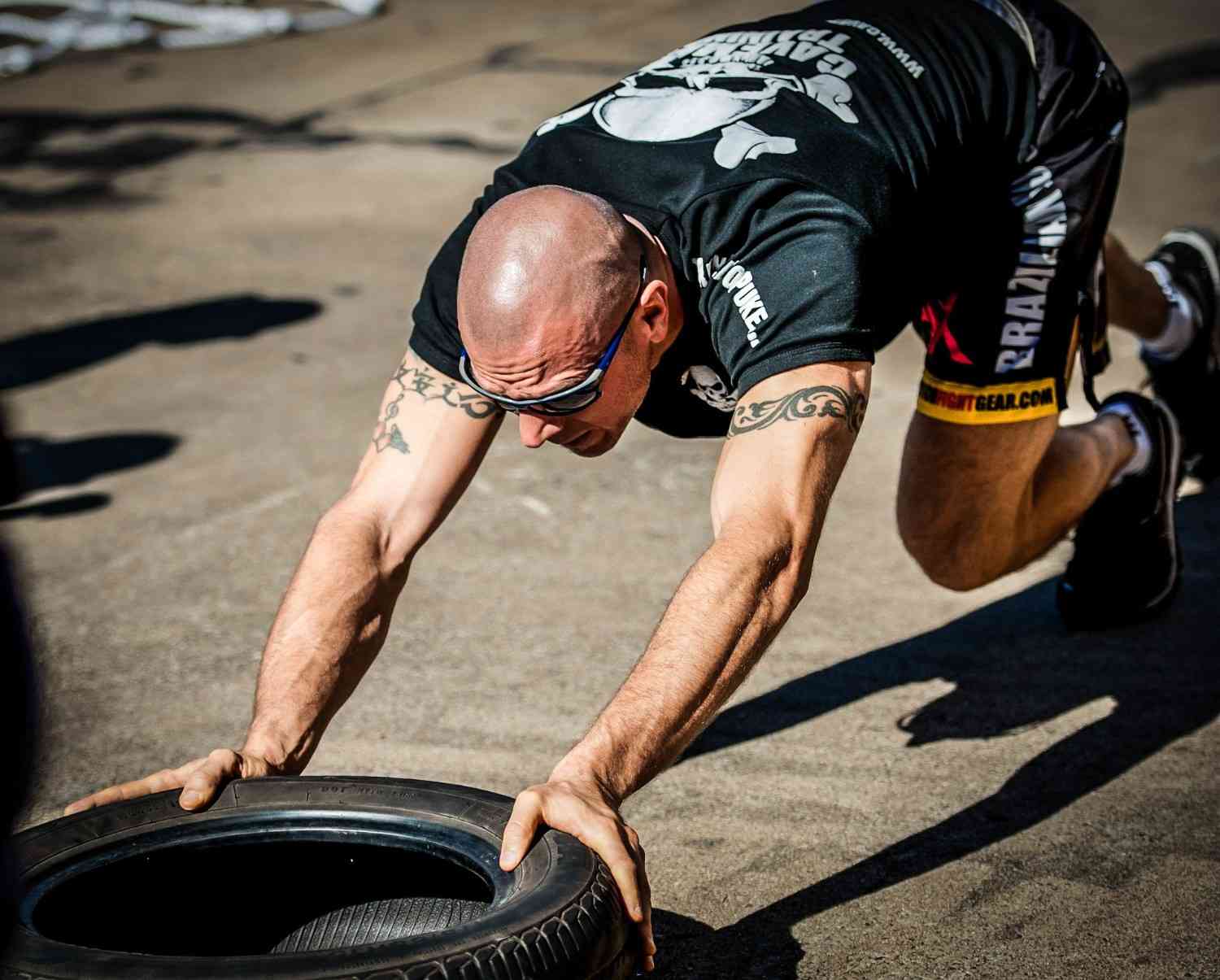Strength training is a non-negotiable element of any solid fitness routine, but when it comes to functional vs traditional strength training, many people find themselves unsure which path to take. These two approaches both build strength, yet they differ in focus, benefits, and execution.
Functional training emphasizes movements that translate into real-life activities, helping you move better, prevent injuries, and improve athletic performance. Traditional strength training, on the other hand, often focuses on building muscle size, increasing maximal strength, and isolating specific muscles for targeted growth.
If you’re on a fitness journey—whether you’re an athlete, a weekend warrior, or someone simply aiming to improve health—it’s important to understand what sets these two methods apart. In this guide, we’ll explore the differences, benefits, drawbacks, and even how to combine them for maximum results. By the end, you’ll have a clear picture of where you stand in the functional vs traditional strength training debate.
Understanding the Basics of Functional vs Traditional Strength Training
Before you choose a training method, you need to know exactly what each one involves.
What is Functional Strength Training?
Functional strength training focuses on exercises that mimic natural movement patterns—like pushing, pulling, bending, twisting, and carrying. Instead of isolating a single muscle, these movements engage multiple muscle groups at once, improving coordination, balance, and core stability.
Functional workouts often use tools like kettlebells, resistance bands, medicine balls, TRX straps, or even your own bodyweight. The goal is to train your body to handle the demands of daily life or sport more efficiently.
Example functional exercises:
-
Kettlebell swings (hip hinge and power development)
-
Walking lunges (lower body strength and balance)
-
Push-ups (upper body pushing and core stability)
-
Medicine ball rotational throws (torso power)
Key benefits:
-
Improves movement quality
-
Reduces injury risk by training stabilizer muscles
-
Enhances athletic and daily performance
-
Boosts flexibility and mobility
What is Traditional Strength Training?
Traditional strength training is the more “classic” approach most people picture when they think about weightlifting. It focuses on targeting specific muscles through controlled, repetitive movements—often using gym machines, dumbbells, or barbells.
In this method, exercises are typically categorized by body parts, with a focus on hypertrophy (muscle growth) or maximal strength.
Example traditional exercises:
-
Bench press (chest and triceps)
-
Barbell curls (biceps)
-
Leg press (quadriceps and glutes)
-
Overhead press (shoulders)
Key benefits:
-
Builds significant muscle mass
-
Increases maximal strength in targeted muscles
-
Follows clear, structured progression
-
Strengthens bones and joints
Key Differences in Functional vs Traditional Strength Training
While both aim to build strength, functional vs traditional strength training diverge in purpose, movement style, and outcomes.
1. Purpose of Training
-
Functional: Prepares you for real-world or sports-related movements.
-
Traditional: Focuses on muscle growth, strength, and aesthetics.
2. Movement Patterns
-
Functional: Uses compound, multi-joint exercises in various planes of motion.
-
Traditional: Often uses isolated, single-plane movements.
3. Muscle Activation
-
Functional: Activates multiple muscles—including stabilizers—at once.
-
Traditional: Targets specific muscles for hypertrophy or strength.
4. Core Engagement
-
Functional: Core muscles are engaged in almost every movement.
-
Traditional: Core work is often separate unless doing compound lifts like squats or deadlifts.
5. Equipment
-
Functional: Resistance bands, kettlebells, stability balls, or bodyweight.
-
Traditional: Barbells, dumbbells, weight machines.
Benefits of Functional Strength Training
Improves Everyday Life
Functional training prepares your body for the movements you do daily—whether it’s lifting a heavy box, climbing stairs, or bending to tie your shoes. This means you’re not just “gym strong”—you’re life strong.
Enhances Mobility and Flexibility
Many functional exercises require a full range of motion, improving joint health and flexibility over time.
Builds Balance and Coordination
Since functional exercises mimic real-world actions, they demand better control, balance, and coordination.
Injury Prevention
Functional training strengthens stabilizing muscles, reducing the risk of strains, sprains, and joint injuries.
Benefits of Traditional Strength Training
Maximum Muscle Growth
If your goal is to increase muscle size significantly, traditional strength training provides the structured overload necessary for hypertrophy.
Measurable Progress
Traditional programs are easy to track. You can see exactly how much weight you lifted last session and strive to beat it.
Strengthens Bones
The heavier loads used in traditional training stimulate bone density, lowering the risk of osteoporosis.
Specific Targeting
If you have muscle imbalances or want to grow a particular area (like bigger arms or stronger legs), isolation exercises help.
Which is Better: Functional vs Traditional Strength Training?
Choosing between functional vs traditional strength training comes down to your goals:
-
Want better movement, improved balance, and injury prevention? Go functional.
-
Want bigger muscles, increased strength, and more gym-specific progress? Go traditional.
For most people, a blend of both methods works best.
How to Combine Functional and Traditional Strength Training
Instead of treating these as competing styles, think of them as complementary.
Step 1 – Start with Functional Warm-Ups
Use bodyweight squats, resistance band rows, and kettlebell deadlifts to wake up stabilizer muscles.
Step 2 – Alternate Training Days
Example:
-
Monday: Traditional upper body
-
Tuesday: Functional full-body
-
Thursday: Traditional lower body
-
Friday: Functional conditioning
Step 3 – Mix in Functional Finishers
After heavy lifts, add functional moves like sled pushes, battle ropes, or farmer’s carries for conditioning.
Sample Weekly Plan Blending Both Methods
Day 1 – Traditional Upper Body
-
Bench Press – 4×8
-
Overhead Press – 3×10
-
Lat Pulldown – 3×12
-
Dumbbell Curls – 3×12
Day 2 – Functional Conditioning
-
TRX Rows – 3×15
-
Walking Lunges – 3×20 steps
-
Medicine Ball Slams – 3×12
-
Plank with Shoulder Taps – 3×30 sec
Day 3 – Traditional Lower Body
-
Squats – 4×8
-
Leg Press – 3×12
-
Romanian Deadlifts – 3×10
-
Calf Raises – 3×15
Day 4 – Functional Power
-
Kettlebell Swings – 3×15
-
Box Jumps – 3×12
-
Sled Push – 3 rounds
-
Side Plank Rotations – 3×20 sec each
Common Mistakes to Avoid
Even with a solid understanding of functional vs traditional strength training, many people make errors that limit their results—or worse, cause injuries. Recognizing these mistakes early can help you train smarter, progress faster, and stay injury-free.
1. Neglecting One Style Completely
One of the biggest mistakes is choosing only one style and ignoring the other. For example, someone who only does functional training may improve mobility and balance but struggle to build significant muscle strength. On the other hand, someone who only does traditional strength training may gain impressive muscle size but have limited flexibility, poor joint mobility, and a higher risk of injury during real-life movements.
Why it’s a problem:
-
Creates fitness imbalances.
-
Limits overall athletic development.
-
Reduces adaptability for real-world activities or sports.
How to fix it:
Blend both approaches into your weekly plan. Dedicate certain days to traditional lifts for strength and muscle mass, and other days to functional movements for mobility, stability, and coordination.
2. Poor Form and Technique
Whether you’re swinging a kettlebell or pressing a heavy barbell, form is everything. Poor technique not only limits muscle activation but also increases the risk of injury—especially with heavier loads in traditional lifting or explosive movements in functional training.
Why it’s a problem:
-
Leads to overuse injuries in joints and tendons.
-
Prevents you from targeting the intended muscles effectively.
-
Slows progress and can cause chronic pain.
How to fix it:
-
Start with lighter weights until your form is perfect.
-
Work with a trainer or use a mirror to monitor technique.
-
Focus on controlled, deliberate movements before adding speed or load.
3. Skipping Mobility and Flexibility Work
Mobility is often overlooked, especially by people focused on traditional strength training. However, both functional and traditional workouts benefit greatly from flexibility and mobility drills. Without them, your range of motion suffers, which not only affects performance but also increases your risk of injury.
Why it’s a problem:
-
Limits your ability to perform functional exercises correctly.
-
Reduces the effectiveness of strength training movements.
-
Increases the likelihood of muscle strains and joint issues.
How to fix it:
-
Incorporate 5–10 minutes of mobility work before training.
-
Use dynamic stretching before workouts and static stretching after.
-
Focus on hips, shoulders, and spine mobility for better performance in both training styles.
Conclusion
In the functional vs traditional strength training debate, there’s no single winner—it depends entirely on your goals. Functional training enhances balance, coordination, mobility, and real-world strength, while traditional training builds muscle mass, targeted strength, and measurable progress.
If you truly want to maximize your fitness, blending both can deliver the best of both worlds. You’ll move better, lift heavier, and reduce your risk of injury—making you not just strong in the gym, but strong for life.
FAQs
Which is better for overall fitness: functional vs traditional strength training?
Neither is universally “better.” Functional training improves movement, coordination, and real-world strength, while traditional strength training focuses on muscle growth and maximal strength. For well-rounded fitness, combining both styles is usually the most effective approach.
Can beginners start with functional training instead of traditional?
Yes. Functional training is beginner-friendly because it often uses lighter weights, bodyweight, and natural movement patterns. However, starting with basic traditional lifts like squats and presses can also help build foundational strength. The best choice depends on your goals and current fitness level.
Does functional strength training build muscle like traditional training?
Functional training can build muscle, but not to the same degree as traditional hypertrophy-focused workouts. If muscle size is your main goal, traditional training with progressive overload will be more effective. However, functional exercises will still improve strength, stability, and endurance.
How often should I train using each method?
For most people, 2–3 traditional strength training sessions per week combined with 1–2 functional training sessions works well. This mix helps you gain strength while improving mobility, balance, and injury resistance. Adjust based on your recovery ability and goals.
Can I replace cardio with functional strength training?
Yes—depending on the workout. Many functional sessions are circuit-style and can elevate your heart rate enough to provide cardiovascular benefits. However, if your goal is endurance or heart health, adding dedicated cardio like running, cycling, or swimming is still beneficial alongside functional or traditional training.



